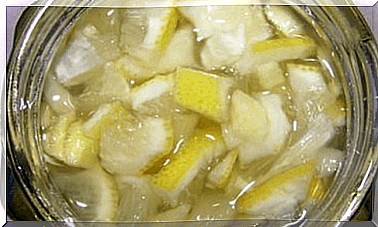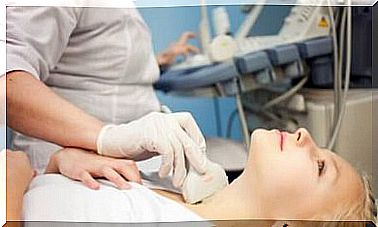Turbinate Hypertrophy: Causes And Symptoms
Turbinate hypertrophy is a benign pathology for which there are various treatment options. However, it can lead to certain complications if left untreated. Find out more in this article!

A hypertrophy of the turbinate is when the volume of the turbinate is greatly enlarged. The turbinate is located in the nasal cavity. When it is enlarged, the air you breathe can no longer circulate normally. This, in turn, can lead to a nasal congestion or blockage.
In the early stages, it is possible to treat this disease with drugs or surgery. But if turbinate hypertrophy is ignored and treated, it could lead to serious and grave situations. For example, the affected person could lose their sense of smell or develop ear and throat infections. In addition, many people suffer from frequent headaches, dry coughs, and snoring.
If you have frequent nasal congestion, you will need to see an ear, nose and throat doctor. This specialist will be able to examine you and diagnose whether you have turbinate hypertrophy or any other condition.
Turbinate hypertrophy
Turbinate hypertrophy is a condition in which the turbinate enlarges. In some cases this is only temporary. However, there are also cases in which this enlargement is permanent. If it’s a chronic problem, the result is a nearly permanent nasal congestion or blockage.
The turbinates are long structures that are located in the nose. In the nasal cavity there are three turbinates on each side, the upper, middle and lower turbinates. Inflammation usually affects the lower turbinates.
In addition, the function of the turbinates is to humidify, warm and purify the air we breathe. Therefore, these are very sensitive organs that can easily swell and change size. This, in turn, can lead to turbinate hypertrophy, a condition that can be treated well.

Why does it occur?
In most cases , turbinate hypertrophy occurs as a result of an allergic reaction such as hay fever. However, there are numerous other causes that can lead to this anomaly. Among others the following:
- Hormonal changes. Hormonal changes can lead to an enlargement of the mucous membrane and this in turn can trigger hypertrophy of the turbinate.
- Aging. The turbinate can decompose over the years. This leads to an increased secretion of mucus and a blocked nose.
- Sinusitis. In addition, sinus inflammation can also lead to this abnormality.
- Crooked nasal septum. A crooked nasal septum can also make breathing difficult. It also means that the turbinates have to work harder. Therefore, this condition can also cause turbinate hypertrophy.
- Unhealthy environment. Environments with toxic elements and vapors or those with very low temperatures can encourage the development of this anomaly.
- Smoking or drinking alcohol. Both tobacco and alcohol use are risk factors.
- Pharmaceuticals. Steroids and the use of nasal sprays can also cause turbinate hypertrophy.
Turbinate hypertrophy: symptoms
The most typical symptom of this condition is a stuffy nose. This condition can be temporary or permanent. However, you should know that there are also some cases of turbinate hypertrophy that go without noticeable symptoms.
Basically, the most common clinical signs include the following symptoms:
- fatigue
- Sleep apnea
- In addition, there are difficulties in sleeping through the night (without interruptions)
- In addition, nosebleeds can also be a typical symptom
- Difficult nasal breathing
- Hearing discomfort
- Decrease or loss of sense of smell
- snoring
- Pain in the face
In most cases, doctors will do a rhinoscopy to diagnose this condition. This is an exam that examines the turbinates. Based on the results, the doctor can then rule out hypertrophy or diagnose the existence of this condition. In addition, this examination is done through the nose or mouth and takes between five and ten minutes. In addition, light anesthesia may also be required in some cases.

What can you do about turbinate hypertrophy?
Treatment of turbinate hypertrophy depends on the underlying causes and the condition of the turbinates. If the cause of the problem is external, changing these variables should help reduce symptoms.
When we speak of external factors, we mean unhealthy surroundings, taking substances or drugs, etc. But in the case of sinusitis or a crooked nasal septum, medical treatment is required. If these measures aren’t effective or the cause of the symptoms isn’t known, doctors usually recommend pharmacological treatment to reduce the inflammation.
In addition, if the hypertrophy persists, surgery may be required. The goal is then to surgically change the position of the turbinate (turbinoplasty). It is also possible to partially or completely remove the turbinate (turbinectomy). In other cases, radiofrequency or laser can be used to reduce the size of the turbinate.
Regardless of the ultimate treatment option, you should know that this condition can be treated well. Therefore, it is important that you seek medical help early to prevent this condition from becoming chronic.









